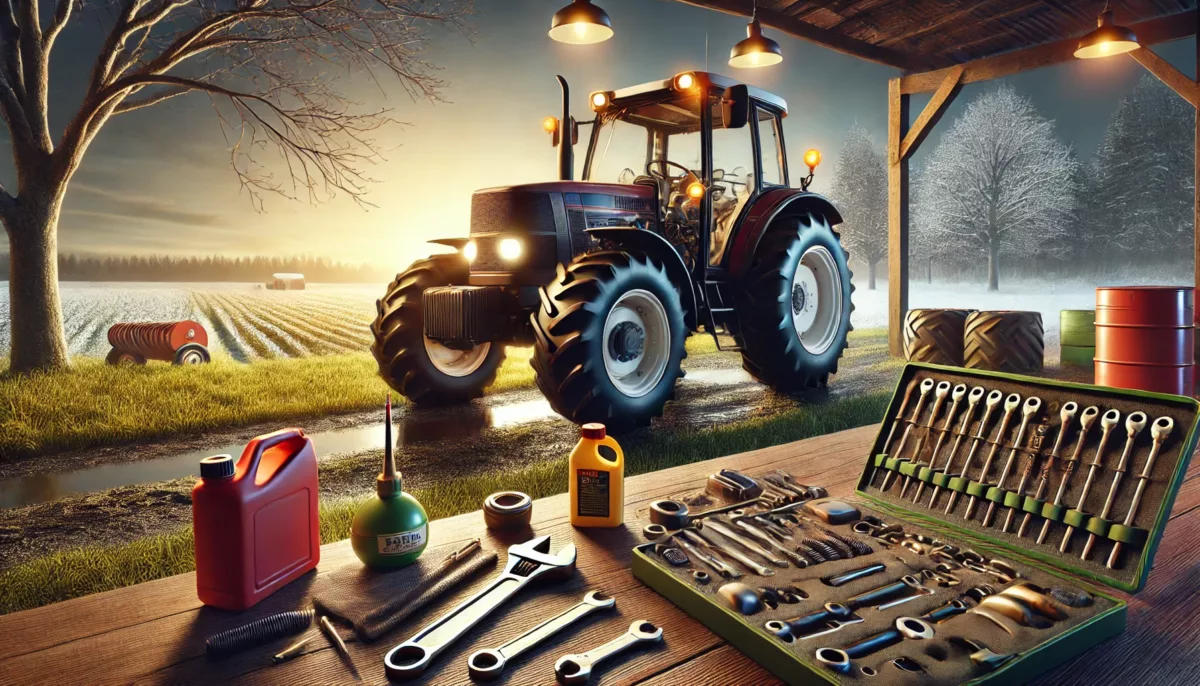Daily maintenance is extremely important for enhancing the efficiency and longing the lifespan of a tractor. In addition to regular repairs and maintenance, tractor maintenance is seasonally differentiated and sophisticated. Especially for those machines that work over 1,500 hours, proper seasonal maintenance could remarkably utilize tractor ergonomics, reduce downtime in operation, improve fuel economy, and eventually increase the resale value of the equipment.
This guide provides comprehensive maintenance and tractor parts replacement recommendations tailored to the different seasons to ensure your tractor stays in top condition all year round. Let’s delve into the maintenance details:

Seasonal Tractor Maintenance Guide
We collected useful info you may maintain in different seasons. As you know, there are tons of tractor parts, to save you time, have a quick look at the key parts for seasonal maintenance.
Spring Preparation
As winter gives way to spring, it’s time to prepare your tractor for the busy farming season ahead. Check the battery, clean or replace the air filter, and inspect the undercarriage for any winter-related damage.
Summer Checks
Summer is the peak farming season, and both drivers and machines face severe challenges in high temperatures. The hot weather poses a great overheating threat to your tractor. To deal with that, regularly monitor the engine’s cooling system, including the fan radiator, to prevent overheating. Also, ensure the fuel system, including the fuel pump and injector nozzles, is clean and functioning efficiently.
Autumn Maintenance
As the season changes, it’s important to prepare your tractor for the colder months. Drain and replace old fluids, check the hydraulic system, and inspect the belts and hoses for signs of wear.
Winter Protection
In most agricultural areas of the United States, winter is a relatively idle season for tractors, so grab the winter to make it a good chance to repair or update. If you have no need for operation in winter, remember to fully charge the battery at the end of autumn to prevent freezing. Wash, clean, and wax your tractor winter to remove dirt and prevent rust; fill up with antifreeze before winter and make sure its freezing point is low enough. Remember to lubricate all moving parts and store your equipment in a sheltered area if possible. Finally, don’t forget to winterize the air conditioning compressor, even if it’s not in use, to prevent damage from freezing.
Daily Tractor Maintenance Routine
In addition to the changing seasons bringing tractor maintenance points, there are several maintenance measures that tractor drivers need to pay regular attention to.
Parts Replacement
Be vigilant about replacing worn parts throughout the year. This includes checking the starter motor and solenoid valves for any signs of failure and replacing them as needed. Regularly check seal kits for leaks and replace them to prevent further damage.
General Tip
Follow the manufacturer’s maintenance schedule for your specific tractor model. Record all maintenance and part replacements to track the tractor’s service history.
Regular Parts Check List
Air filters: Check, clean, or replace regularly.
Fuel filters: Replace them promptly to avoid clogging with contaminants.
Hydraulic system filters: Check for contamination or clogging by hydraulic fluid.
Fluid Checks: Check and replace or replenish fluids periodically.
Belts and hoses: Check every 200 hours or annually to prevent damage.
Coolant: Check every two years, flush the system, and replace it as necessary.
Conclusion
By adhering to this seasonal check and parts replacement guide, you can ensure that your tractor is always ready for work, minimizing downtime and prolonging the life of your equipment. For purchasing the parts mentioned above, a quality aftermarket solution could be taken into consideration. FridayParts is a one-stop online shop for OEM quality off-road machinery, you can find compatible components while saving your money. Finally, I hope this blog can give you some inspiration on tractor maintenance.
